Fiddle leaf fig staking + dormancy question
Stephanie Burke
7 years ago
last modified: 7 years ago
Featured Answer
Sort by:Oldest
Comments (46)
Stephanie Burke
7 years agoRelated Discussions
Fiddle leaf fig tree question
Comments (0)Hi everone, I need help!! I just purchases flft from Home Depot this weekend. I should have checked more carefully but I noticed brown spots on the leaves and cracking at the end. Overall I like the tree, it looks healthy but few brown spots and wrinkles / cracking end of leaves worries me. should I keep or return? thanks...See MoreFiddle Leaf Fig Question
Comments (0)Hello! I just purchased a ficus lira today and have a question about pruning. I want it to look less bushy, more like a tree, with a bare trunk and foliage on top. Should I take some leaves off of the bottom, or will that harm the plant? Also, there are a few leaves that are ripped and one or two that a bit of browning and yellowing, should I take these off or leave them? If I do need to remove leaves, what is the best way to do so? Thanks in advance!...See MoreFiddle-leaf fig repotting questions.
Comments (2)I have a healthy fiddle that I've had to repot twice now. It's now in a mix of roughly half Ocean Forest Fox Farm potting soil and half pine bark fines. If I were to redo it I would do the 3-1-1 that my Japanese Maples are in - 3 parts partially composted pine bark fines (with the sap wood stuff picked out), 1 part Ocean Forest potting soil, and 1 part perlite. Then I add about 1 Tbsp organic garden lime per gallon of finished mix, and Osmocote time release fertilizer per instructions on label. Personally, and I may be wrong here, but if your fiddle is pushing new growth then I would feel perfectly ok with repotting it at that time. I've had that issue before where new leaves seem susceptible to bugs and disease. I drench all the leaves in neem oil when that happens. But I think that leaf being puny indicates something else - maybe that it's time for a repot? Also, and take this with a grain of salt, I hack the roots when I repot. I'm not very judicious about it, taking about 30% to 40%. I use my super sharp garden scissors that I sterilize with Lysol (yes, aerosol Lysol). I cut away a certain amount mass-wise, then take care to also cut any wrap-around roots, "hooked" roots, and portions of thicker roots (to encourage growth of feeder roots). I do try to keep my hose sprayer on mist while I'm working and mist the roots pretty frequently but only to keep them moist. I work fast. Then I put it in the new pot and start filling with my mix. I pull the tree up slightly after every few scoops and try to make sure the root area doesn't have any air pockets. When I'm finished I water to eliminate any pockets I missed. I err on the side of caution and don't put soil around the root crown. Two things: I would take that small tree at the base out if possible. You can plant that in the current pot and see how it grows. If it's attached to the actual root of the larger tree (if it's just another node and not a separate tree) then I don't know, I'd probably keep it attached. Also, I would start pruning the canopy now. You can make more fiddles from the cuttings. I just plop my cuttings (of about two leaves) in moistened peat moss, put them in a well lit but protected shady area, and keep them moist. They will root. I dip them in rooting hormone first to make myself feel better. I usually do cuttings of about two leaves at a time like this. The benefit is that you will get branching from your main tree if you prune it, which is what you want. Mine started off like yours and now I have a real canopy. I'm about to prune at least four or five branches this month when the weather gets more consistently warm. I like to prune fiddle branches when I can leave the branch with two leaves and have two leaves to plant as cuttings. If your fiddle is pushing new growth I wouldn't time my repot by when I fertilized it last. But I wouldn't fertilize again for two weeks after the repot. Let the roots grow first into the new mix. Personally I'd go larger than an eight inch pot for the repot. I've included some pics of mine. It's about four feet tall and, like yours, started out as a single trunk tree. I've also included pics of several of the branches that I intend to prune in the next few weeks. Tomorrow I will post pics of a fiddle I'm trying to save. You'll be surprised. I hacked literally every single leaf off of it to get some back budding. Hopefully in a month I will see some results. It's nerve racking but I thought, why not try it?...See MoreQuestions about new growth on fiddle leaf fig & When should I repot?
Comments (4)Al Tapla would you be able to tell me what is wrong with mine? I've had this tree four four years and never had any trouble with it but now I am killing it! I wanted it to grow more branches so I pruned it and moved it to a sunny-er spot and added grow lights and started fertilizing more regularly. Next thing I know, it's getting yellow blotches all over the leaves and sometimes red speckles and tiny pin holes. I found spider mites on a different plant, but I couldn't see any on this one, but I hosed it off and sprayed with dish soap in case it was mites. Then the soil was soaked and wouldn't dry and a week and a half later this leaf turned black and dry in the center. I thought maybe it was because the soil was wet too long. I freaked out, so just yesterday I did a full repot (never done this before) and added perlite and orchid bark mix to potting mix to get a grittier faster drying mix. I also cut off half of the leaves. It really doesn't look too happy today (droopy leaves and soft stems and even more red speckling on new leaves) I don't know if it's been given too much light, too much fertilizer, too much water, or is infected with mites, or all of the above. Anything you can suggest? The tiny pin-holes make me think mites are one the table but I hate to stress it out more if it's not that....See MoreStephanie Burke
7 years agolast modified: 7 years agoStephanie Burke
7 years agoStephanie Burke
7 years agoStephanie Burke
7 years agotapla (mid-Michigan, USDA z5b-6a)
7 years agolast modified: 7 years agoStephanie Burke thanked tapla (mid-Michigan, USDA z5b-6a)Dave
7 years agoStephanie Burke
7 years agolast modified: 7 years agotapla (mid-Michigan, USDA z5b-6a)
7 years agoStephanie Burke thanked tapla (mid-Michigan, USDA z5b-6a)Dave
7 years agolast modified: 7 years agoNeed2SeeGreen 10 (SoCal)
7 years agoNeed2SeeGreen 10 (SoCal)
7 years agotapla (mid-Michigan, USDA z5b-6a)
7 years agotapla (mid-Michigan, USDA z5b-6a)
7 years agolast modified: 7 years agoDave
7 years agolast modified: 7 years agoNeed2SeeGreen 10 (SoCal)
7 years agoajebailey
6 years agoDave
6 years agoajebailey
6 years agorobin98
6 years agoajebailey
6 years agoChristine T
6 years agolitterbuggy (z7b, Utah)
6 years agotwomalamutes
6 years agolitterbuggy (z7b, Utah)
6 years agotwomalamutes
6 years agolitterbuggy (z7b, Utah)
6 years agoStephanie Burke
6 years agoEllie Pearson
6 years agotwomalamutes
6 years agotapla (mid-Michigan, USDA z5b-6a)
6 years agotwomalamutes
6 years agotapla (mid-Michigan, USDA z5b-6a)
6 years agotwomalamutes
6 years agorpscotch
5 years agotapla (mid-Michigan, USDA z5b-6a)
5 years agorpscotch
5 years agotapla (mid-Michigan, USDA z5b-6a)
5 years agorpscotch
5 years ago
Related Stories

HOUSEPLANTSPlay Up Some Fiddleleaf Figs for a Lively Indoor Tune
Strike a dramatic chord in a minimalist scene or a country note in a rustic setting — fiddleleaf fig plants harmonize with any style
Full Story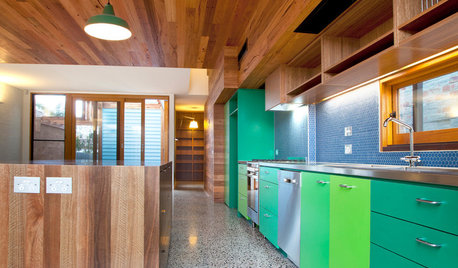
EVENTSTop Trends to Inspire You From the London Design Festival
What’s going to be next season’s biggest paint trend? Is midcentury still in? Discover the answers to these questions and more
Full Story
WINTER GARDENINGPruning Secrets for Exquisite Roses
Encourage gorgeous blooms year after year with this time-tested advice on how to prune your rosebush in winter for health and shape
Full Story
CONTAINER GARDENSContainer Garden Basics: How and When to Water Potted Plants
Confused about soil moisture, the best time to water and what watering device to use? This guide can help
Full Story
HOUSEPLANTS10 Top Plants to Grow Indoors
Brighten a room and clean the air with a houseplant that cascades artfully, stretches toward the ceiling or looks great on a wall
Full Story
HOUSEPLANTS8 Essentials for Healthy Indoor Plants
Houseplants add so much to our homes — and can thrive when grown in the right conditions. Keep these tips in mind
Full Story
GARDENING GUIDESGarden Myths to Debunk as You Dig This Fall and Rest Over Winter
Termites hate wood mulch, don’t amend soil for trees, avoid gravel in planters — and more nuggets of garden wisdom
Full Story
DECORATING GUIDESTop 10 Interior Stylist Secrets Revealed
Give your home's interiors magazine-ready polish with these tips to finesse the finishing design touches
Full Story
DECORATING GUIDESDitch the Rules but Keep Some Tools
Be fearless, but follow some basic decorating strategies to achieve the best results
Full Story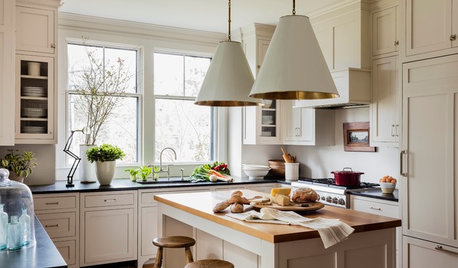
MOST POPULARHouzz Tour: Easygoing and Elegant in White, Cream and Gray
The renovation of an 1860s Massachusetts home creates a sophisticated, serene and comfortable living space
Full Story




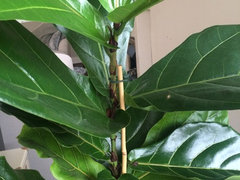
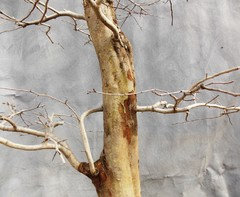

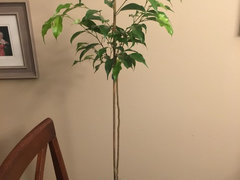
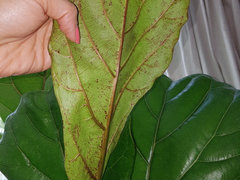






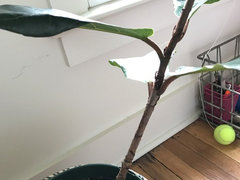







tapla (mid-Michigan, USDA z5b-6a)